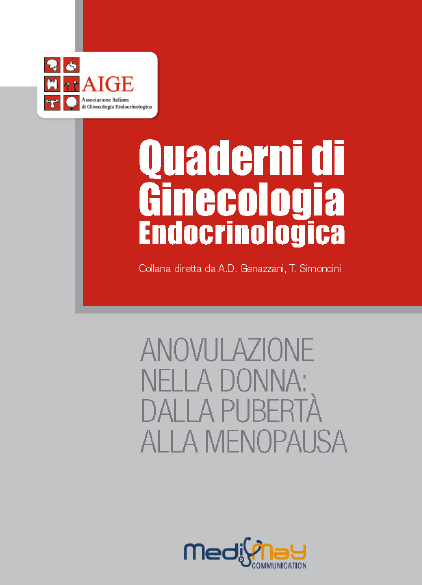-
Angelos Daniilidis , Fani Gkrozou , Panagiotis Papandreou , Orestis Tsonis , Anastasios Liberis , Anastasia Vatopoulou
Female contraception: options for specific high-risk groupsEuropean Gynecology and Obstetrics. 2020; 2(3):134-148
DownloadAbstract
Background: Contraception and family planning are now recognized as essential in order to ensure the well-being of women, while supporting the health and development of communities. In this context, obesity, age (over 40 years or under 18 years), and interval since childbirth, abortion, miscarriage, ectopic pregnancy or gestational trophoblastic disease are some factors associated with higher a risk of adverse health issues, and maternal and infant complications, which seem to affect the safe use and effectiveness of certain types of contraceptives.
Materials and Methods: The authors examined the up-to-date literature in order to evaluate the safety and effectiveness of single contraceptive methods when used in belonging to high-risk groups such as those with obesity, over 40 years old, under 18 years old and women after childbirth, abortion, miscarriage, ectopic pregnancy or gestational trophoblastic disease.
Results: Obesity is linked to adverse health issues, such as cardiovascular disease and metabolic disorders which may affect the safe use of certain types of contraception. Women over 40 years old have an increased age-related risk of cardiovascular disease, osteoporosis, and breast, ovarian and endometrial cancer and need proper guidance in order to achieve optimal contraception safely. A young woman’s decision to use contraception may be influenced by individual, familial and social factors, while the effectiveness, safety, side effects, ease of use and knowledge of the method are some of the factors that can affect her choice of contraceptive method. Finally, contraception counseling after the various possible pregnancy outcomes (childbirth, abortion, miscarriage, ectopic pregnancy, and gestational trophoblastic disease) is of great importance as short interpregnancy intervals are associated with a higher risk of maternal and infant complications.
Conclusion: Healthcare practitioners should be aware of the safety, effectiveness, possible adverse effects and also the non-contraceptive benefits of each contraceptive method before prescribing contraception, and therefore able to offer specific guidance and the most appropriate family planning solution to women in high-risk groups. -
Ariel Furer, Arnon Afek, Adir Sommer, Lital Keinan-Boker, Estela Derazne, Zohar Levi, Dorit Tzur, Shmuel Tiosano, Avi Shina, Yuval Glick, Jeremy D Kark, Amir Tirosh, Gilad Twig
Adolescent obesity and midlife cancer risk: a population based cohort study of 2·3 million adolescents in IsraelLancet Diabetes Endocrinol 2020; 8: 216–25Abstract
Background Obesity has been established as a causal factor for several types of cancer, and adolescent obesity is increasing worldwide. We examined associations between measured body-mass index (BMI) at age 17 years and cancer incidence, and with mortality among those who developed cancer.
Methods In a nationwide, population-based cohort of adolescents, height and weight were measured at prerecruitment mandatory medical examination during 1967–2010. BMI was classified according to US Center for Disease Control and Prevention percentiles. We applied Cox proportional hazard models to estimate the hazard ratios (HRs) and 95% CIs for incident cases of cancer using the 5th–49th BMI percentile group as a reference. The primary outcome was any cancer diagnosis between Jan 1, 1967, and Dec 31, 2012, as recorded in the Israeli National Cancer Registry. Participants with a diagnosis of cancer at baseline (before military recruitment assessment) were excluded from this analysis. The secondary outcome of this study was all-cause mortality among cohort members who had cancer, between Jan 1, 1967, and Dec 31, 2017.
Findings Of the 2 458170 participants examined between Jan 1, 1967, and Dec 31, 2010, 160 040 were excluded. 2 298 130 participants of which 928110 were women and 1370020 were men. During 29542735 person-years of follow-up in men, 26353 incident cases of cancer were recorded and in 18044863 person-years of follow-up in women, 29 488 incident cases of cancer were recorded. Cancer incidence increased gradually across BMI percentiles. The adjusted HR was 1·26 (95% CI 1·18–1·35) among men with adolescent obesity. Among women, we found no association between obesity and overall cancer, driven by inverse associations of obesity with cervical and breast cancers. When these cancers were excluded, the adjusted HR for cancer was 1·27 (1·13–1·44) among women with adolescent obesity. In both sexes, high BMI (≥85th percentile) was associated with an increased cancer risk after 10 years. This association was accentuated in the late period of the cohort versus the early period of the cohort. BMI was positively associated with a higher risk of mortality. The projected population attributable risk for high BMI was 5·1% (4·2–6·1) for men and 5·7% (4·2–7·3) for women.
Interpretation The increasing prevalence of adolescent obesity and the possible association between adolescent BMI and cancer incidence might increase the future burden of obesity-related cancers. BMI among adolescents could constitute an important intervention target for cancer prevention. -
Arianna Romani, Fei Yin, Alessandro Trentini, Gloria Bonaccorsi, Carlo Cervellati, Roberta Diaz Brinton
Brain and serum cholesterol dyshomeostasis during the perimenopausal transition: A possible risk factor for Alzheimer’s diseaseGynecological and Reproductive Endocrinology and Metabolism 2020; 1(3):192-201
DownloadAbstract
Background and Purpose: The aim of this study was to investigate alterations in cholesterol metabolism during the perimenopausal transition that could increase the long-term risk of neurodegenerative disease in women, particularly Alzheimer’s disease.
Methods: Brain and serum cholesterol metabolism during chronological and endocrine aging were evaluated in rat models recapitulating the main characteristics of human perimenopause. Serum cholesterol profile were obtained from 224 women across perimenopausal stages.
Results: In rodent brain, chronological aging, particularly before perimenopause, was associated with an up-regulation of genes involved in cholesterol synthesis, efflux, and export. Conversely, endocrine aging in rats was associated with downregulation of these pathways. Analysis of brain proteins involved in cholesterol metabolism showed export and clearance defects during endocrine aging and a decline in mobilization during post-menopausal chronological aging. Peripherally, serum lipid profile analysis in rats and women indicated an chronological age-dependent increase in total cholesterol and triglycerides which did not change with endocrine aging.
Conclusions: In brain chronological and endocrinological aging during the perimenopausal transition were associated with changes in cholesterol homeostasis in brain. Endocrine aging was characterized by a decline in cholesterol homeostatic processes which were sustained during post-menopausal chronological aging. The decline in cholesterol homeostatic transport, efflux and clearance mechanisms in brain during midlife aging is consistent with an early prodromal state that potentially contributes to risk of Alzheimer’s later in life. -
Jacqueline R. Leachman, Mathew D. Rea, Dianne M. Cohn, Xiu Xu, Yvonne N. Fondufe-Mittendorf, Analia S. Loria
Exacerbated obesogenic response in female mice exposed to early life stress is linked to fat depot-specific upregulation of leptin protein expressionAm J Physiol Endocrinol Metab 21: : E852-E862, 2020Abstract
Early life stress (ELS) is an independent risk factor for increased BMI and cardiometabolic disease risk later in life. We have previously shown that a mouse model of ELS, maternal separation and early weaning (MSEW), exacerbates high-fat diet (HF)-induced obesity only in adult female mice. Therefore, the aim of this study was to investigate 1) whether the short- and long-term effects of HF on leptin expression are influenced by MSEW in a sex-specific manner and 2) the potential epigenetic mechanisms underlying the MSEW-induced changes in leptin expression. After 1 wk of HF, both MSEW male and female mice displayed increased fat mass compared with controls (P < 0.05). However, only MSEW female mice showed elevated leptin mRNA expression in gonadal white adipose tissue (gWAT; P < 0.05). After 12 wk of HF, fat mass remained increased only in female mice (P < 0.05). Moreover, plasma leptin and both leptin mRNA and protein expression in gWAT were augmented in MSEW female mice compered to controls (P < 0.05), but not in MSEW male mice. This association was not present in subcutaneous WAT. Furthermore, among 16 CpG sites in the leptin promoter, we identified three hypomethylated sites in tissue from HF-fed MSEW female mice compared with controls (3, 15, and 16, P < 0.05). These hypomethylated sites showed greater binding of key adipogenic factors such as PPARγ (P < 0.05).
Taken together, our study reveals that MSEW superimposed to HF increases leptin protein expression in a sex- and fat depot-specific fashion. Our data suggest that the mechanism by which MSEW increases leptin expression could be epigenetic. -
Giulia Gava, Ilaria Mancini, Stefania Alvisi, Renato Seracchioli, Maria Cristina Meriggiola
A comparison of 5-year administration of cyproterone acetate or leuprolide acetate in combination with estradiol in transwomenEur J Endocrinol 183: 561–569, 2020Abstract
Objective The impact of different combinations of long-term gender-affirming hormone therapy (GAHT) in transwomen (TW) is largely unknown. To assess the effects of 5-year administration of cyproterone acetate (CPA) or leuprolide acetate (Leu) plus transdermal or oral estradiol (E).
Design Cohort study based on prospectively collected data. Fifty TW received 50 mg CPA daily orally (n = 25; CPA+E group) or 3.75 mg Leu i.m. monthly (n = 25; Leu+E group) with 1 or 2 mg E daily for 5 years. Reproductive hormones, biochemical and anthropometric parameters, body composition and bone mineral density (BMD) were assessed.
Results LH, FSH and total testosterone levels were similarly and significantly suppressed in both groups. Prolactin increased only in the CPA+E group (P = 0.002). Fasting insulin resistance and glucose progressively increased in the CPA+E group only (treatment × time effect P = 0.002 and P = 0.043, respectively). Total cholesterol increased more in the Leu+E group than in the CPA+E group and HDL-cholesterol decreased in the CPA+E group (time × treatment interaction effect, P = 0.007). Lumbar and total body BMD increased in both groups after 3 years. No serious adverse events were recorded.
Conclusions Both regimens were effective in suppression of T production. CPA+E worsened the metabolic profile with a slight increase in PRL levels. All subjects presented an increase in BMD regardless of treatment. These preliminary data could have clinical implications in the choice of GAHT, in particular for those TW not requiring gender-affirming surgery. -
Bashar Hasan, Tarek Nayfeh, Muayad Alzuabi, Zhen Wang, Aravind Reddy Kuchkuntla, Larry J Prokop, Connie B Newman, Mohammad Hassan Murad, Tamim I Rajjo
Weight Loss and Serum Lipids in Overweight and Obese Adults: A Systematic Review and Meta-AnalysisJ Clin Endocrinol Metab 2020 105, No. 12, 1–9 doi:10.1210/clinem/dgaa673
DownloadAbstract
Background: Excess adipose tissue is associated with an abnormal lipid profile that may improve with weight reduction. In this meta-analysis, we aimed to estimate the magnitude of change in lipid parameters associated with weight loss in adults who are overweight or obese.
Methods: We searched MEDLINE, EMBASE, Cochrane Database of Systematic Reviews, and Scopus from 2013 to September, 2018. We included randomized controlled trials (RCTs) that evaluated interventions to treat adult obesity (lifestyle, pharmacologic and surgical) with follow-up of 6 months or more.
Results: We included 73 RCTs with moderate-to-low risk of bias, enrolling 32 496 patients (mean age, 48.1 years; weight, 101.6 kg; and body mass index [BMI], 36.3 kg/m2 ). Lifestyle interventions (diet, exercise, or both), pharmacotherapy, and bariatric surgery were associated with reduced triglyceride (TG) and low-density lipoprotein cholesterol (LDL-C) concentrations and increased high-density lipoprotein cholesterol (HDL-C) at 6 and 12 months. The following data are for changes in lipid parameters after 12 months of the intervention with 95% CI. Following lifestyle interventions, per 1 kg of weight lost, TGs were reduced by –4.0 mg/dL (95% CI, –5.24 to –2.77 mg/dL), LDL-C was reduced by –1.28 mg/dL (95% CI, –2.19 to –0.37 mg/dL), and HDL-C increased by 0.46 mg/dL (95% CI, 0.20 to 0.71 mg/dL). Following pharmacologic interventions, per 1 kg of weight lost, TGs were reduced by –1.25 mg/dL (95% CI, –2.94 to 0.43 mg/dL), LDL-C was reduced by –1.67 mg/dL (95% CI, –2.28 to –1.06 mg/dL), and HDL-C increased by 0.37 mg/dL (95% CI, 0.23 to 0.52 mg/dL). Following bariatric surgery, per 1 kg of weight lost, TGs were reduced by –2.47 mg/dL (95% CI, –3.14 to –1.80 mg/dL), LDL-C was reduced by –0.33 mg/ dL (95% CI, –0.77 to 0.10 mg/dL), and HDL-C increased by 0.42 mg/dL (95% CI, 0.37 to 0.47 mg/dL). Low-carbohydrate diets resulted in reductions in TGs and increases in HDLC, whereas low-fat diets resulted in reductions in TGs and LDL-C and increases in HDL-C. Results were consistent across malabsorptive and restrictive surgery.
Conclusions: Weight loss in adults is associated with statistically significant changes in serum lipids. The reported magnitude of improvement can help in setting expectations, inform shared decision making, and facilitate counseling. -
Anastassios G Pittas, Rolf Jorde, Tetsuya Kawahara, Bess Dawson-Hughes
Vitamin D Supplementation for Prevention of Type 2 Diabetes Mellitus: To D or Not to D?J Clin Endocrinol Metab 2020 Vol. 105, No. 12, 1–13 doi:10.1210/clinem/dgaa594Abstract
Context: Over the last decade, vitamin D has emerged as a risk determinant for type 2 diabetes and vitamin D supplementation has been hypothesized as a potential intervention to lower diabetes risk. Recently, several trials have reported on the effect of vitamin D supplementation on diabetes prevention in people with prediabetes.
Evidence Acquisition: A comprehensive literature review was performed using PubMed, Embase, and ClinicalTrials.gov to identify: (1) recent meta-analyses of longitudinal observational studies that report on the association between blood 25-hydroxyvitamin D (25[OH]D) level and incident diabetes, and (2) clinical trials of adults with prediabetes that have reported on the effect of vitamin D supplementation on incident diabetes.
Evidence Synthesis: Longitudinal observational studies report highly consistent associations between higher blood 25(OH)D levels and a lower risk of incident diabetes in diverse populations, including populations with prediabetes. Trials in persons with prediabetes show risk reduction in incident diabetes with vitamin D supplementation. In the 3 large trials that were specifically designed and conducted for the prevention of diabetes, vitamin D supplementation, when compared with placebo, reduced the risk of developing diabetes by 10% to 13% in persons with prediabetes not selected for vitamin D deficiency.
Conclusions: Results from recent trials are congruent with a large body of evidence from observational studies indicating that vitamin D has a role in modulating diabetes risk. Participant-level meta-analysis of the 3 largest trials should provide a more refined estimate of risk reduction and identify patient populations that are likely to benefit the most from vitamin D supplementation.
Abstracts selezionati
-
Angelos Daniilidis , Fani Gkrozou , Panagiotis Papandreou , Orestis Tsonis , Anastasios Liberis , Anastasia Vatopoulou
Female contraception: options for specific high-risk groupsEuropean Gynecology and Obstetrics. 2020; 2(3):134-148
Download -
Ariel Furer, Arnon Afek, Adir Sommer, Lital Keinan-Boker, Estela Derazne, Zohar Levi, Dorit Tzur, Shmuel Tiosano, Avi Shina, Yuval Glick, Jeremy D Kark, Amir Tirosh, Gilad Twig
Adolescent obesity and midlife cancer risk: a population based cohort study of 2·3 million adolescents in IsraelLancet Diabetes Endocrinol 2020; 8: 216–25 -
Arianna Romani, Fei Yin, Alessandro Trentini, Gloria Bonaccorsi, Carlo Cervellati, Roberta Diaz Brinton
Brain and serum cholesterol dyshomeostasis during the perimenopausal transition: A possible risk factor for Alzheimer’s diseaseGynecological and Reproductive Endocrinology and Metabolism 2020; 1(3):192-201
Download -
Jacqueline R. Leachman, Mathew D. Rea, Dianne M. Cohn, Xiu Xu, Yvonne N. Fondufe-Mittendorf, Analia S. Loria
Exacerbated obesogenic response in female mice exposed to early life stress is linked to fat depot-specific upregulation of leptin protein expressionAm J Physiol Endocrinol Metab 21: : E852-E862, 2020 -
Giulia Gava, Ilaria Mancini, Stefania Alvisi, Renato Seracchioli, Maria Cristina Meriggiola
A comparison of 5-year administration of cyproterone acetate or leuprolide acetate in combination with estradiol in transwomenEur J Endocrinol 183: 561–569, 2020 -
Bashar Hasan, Tarek Nayfeh, Muayad Alzuabi, Zhen Wang, Aravind Reddy Kuchkuntla, Larry J Prokop, Connie B Newman, Mohammad Hassan Murad, Tamim I Rajjo
Weight Loss and Serum Lipids in Overweight and Obese Adults: A Systematic Review and Meta-AnalysisJ Clin Endocrinol Metab 2020 105, No. 12, 1–9 doi:10.1210/clinem/dgaa673
Download -
Anastassios G Pittas, Rolf Jorde, Tetsuya Kawahara, Bess Dawson-Hughes
Vitamin D Supplementation for Prevention of Type 2 Diabetes Mellitus: To D or Not to D?J Clin Endocrinol Metab 2020 Vol. 105, No. 12, 1–13 doi:10.1210/clinem/dgaa594






